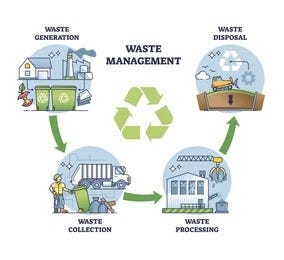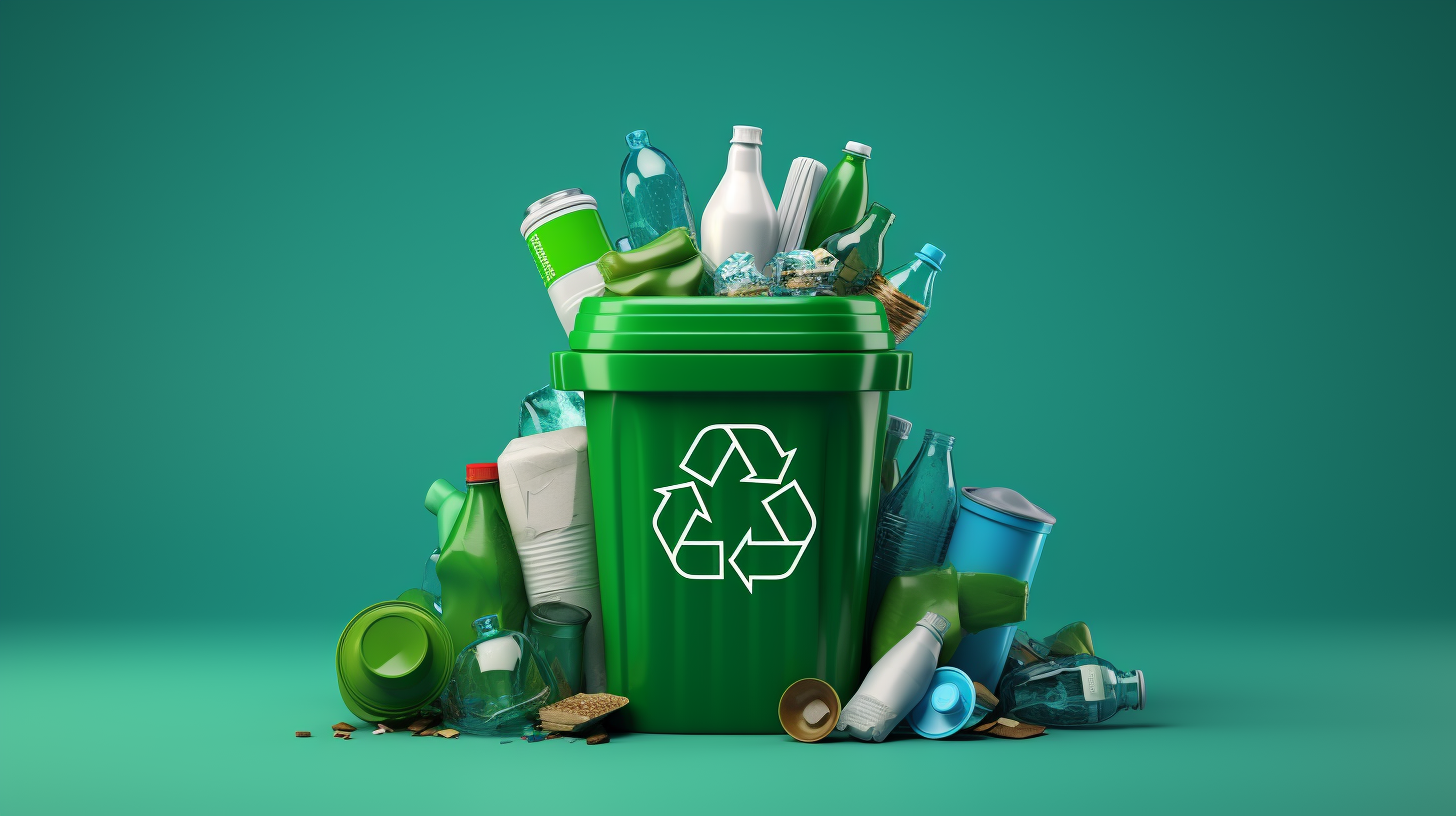Checking Out Different Types of Waste in Modern Waste Administration Equipment
The modern landscape of waste monitoring entails navigating an intricate variety of waste types, each requiring specialized handling and disposal methods to mitigate ecological effects. Community solid waste, hazardous waste, electronic waste, and organic waste each existing unique obstacles and chances for source recuperation.
Metropolitan Solid Waste
Local solid waste, usually referred to as household garbage or waste, encompasses a selection of discarded products produced by property, commercial, and institutional resources within a town. This waste stream typically includes items such as product packaging, food scraps, yard trimmings, paper, plastics, textiles, and disposed of house products. The management of metropolitan solid waste is an essential component of urban planning and public health, requiring efficient collection, transportation, and disposal systems.
Reliable waste management systems are developed to decrease environmental influence while making the most of resource recuperation. This commonly involves a combination of methods including landfilling, recycling, and composting. Recycling programs target products like paper, glass, steels, and specific plastics, diverting them from landfills and reintroducing them into the manufacturing cycle. Composting organic waste, such as food scraps and backyard trimmings, not only reduces garbage dump use but also generates important dirt amendments.
Districts must likewise attend to the financial and logistical obstacles connected with waste monitoring. Applying pay-as-you-throw systems, boosting public awareness, and investing in innovation can dramatically boost waste diversion prices. By incorporating these methods, towns can promote sustainable communities, reduce greenhouse gas exhausts, and preserve all-natural resources.
Hazardous Waste

Efficient harmful waste monitoring includes a number of vital steps: identification, partition, disposal, and therapy. Identification involves the category of waste based on its harmful residential or commercial properties. Partition guarantees that unsafe materials are saved independently from non-hazardous waste to protect against cross-contamination. Treatment methods, such as chemical neutralization, incineration, and stabilization, are utilized to lower the poisoning, quantity, or movement of the waste. Disposal options, including protected garbage dumps and underground storage, are chosen to guarantee lasting containment.
Governing structures, such as the Resource Preservation and Recovery Act (RCRA) in the USA, offer standards and criteria for hazardous waste administration. Adherence to these regulations, combined with improvements in waste therapy innovations, is vital in alleviating the dangers associated with contaminated materials.
Electronic Waste
Electronic waste, generally described as e-waste, stands for a swiftly growing challenge in waste administration systems internationally. This kind of waste includes thrown out electronic gadgets and tools such as mobile phones, computer systems, tvs, and various other digital home appliances. The quick rate of technological development, coupled with reducing product life expectancies and consumer demand for the latest gadgets, has actually exponentially boosted the quantity of e-waste produced each year.
E-waste is particularly problematic because of its complex structure, often containing hazardous materials like cadmium, mercury, and lead, which position significant ecological and health risks if not correctly taken care of. Conversely, e-waste additionally has valuable products such as gold, copper, and silver, which can be recovered and reused. The why not try these out double nature of e-waste-- both unsafe and valuable-- necessitates customized handling, reusing, and disposal processes.
Effective e-waste our website administration entails rigorous regulative structures, robust collection systems, and advanced recycling modern technologies. Public understanding and involvement are vital, as inappropriate disposal practices, such as prohibited disposing and casual recycling, worsen ecological contamination and wellness dangers. Enhancing e-waste management methods is essential for reducing ecological influence and recovering important sources in a significantly digital world.

Organic Waste
Organic waste, consisting of cooking area scraps, lawn trimmings, and agricultural residues, represents a substantial portion of the global waste stream. This kind of waste is eco-friendly, meaning it can be damaged down by microorganisms right into simpler natural compounds. In spite of its capacity for all-natural decay, incorrect monitoring of organic waste can cause negative ecological impacts, consisting of the exhaust of greenhouse gases such as methane, which add to environment change.
Efficient management of organic waste is essential for reducing these ecological influences (recycling lives services). Composting is a widely embraced technique, transforming organic waste right into nutrient-rich compost that can improve soil health and farming productivity. Furthermore, anaerobic food digestion is an arising modern technology that converts organic waste into biogas, an eco-friendly power resource, and digestate, which can be used as fertilizer
Municipalities and waste management entities need to apply durable natural waste collection and treatment programs to make the most of the benefits of these procedures. Public education and learning projects can additionally play a critical function in encouraging houses and businesses to separate organic waste from various other types of waste. By prioritizing the administration of natural waste, societies can reduce landfill usage, lower greenhouse gas exhausts, and produce valuable results for farming use.

Cutting-edge Waste Monitoring
In the realm of waste administration, cutting-edge methodologies are transforming how societies manage their refuse, intending for sustainability and efficiency. One popular advancement is the execution of clever waste containers geared up helpful site with sensing units that check fill degrees and maximize collection courses.
One more significant growth is the adoption of waste-to-energy (WtE) innovations. By converting non-recyclable waste into functional power with procedures such as incineration and anaerobic food digestion, WtE minimizes landfill burden and gives a renewable resource source. In addition, improvements in chemical recycling enable the break down of intricate plastics right into their original monomers, making it possible for the development of brand-new, high-grade plastic items.
Moreover, the round economic climate version is gaining traction, highlighting the layout of products and systems that focus on reusability and source efficiency. This alternative strategy encourages markets to decrease waste generation from the outset. With these cutting-edge techniques, modern-day waste management systems are not only resolving the immediate difficulties of garbage disposal however additionally leading the way for a more lasting future.
Verdict
An extensive understanding of community strong waste, contaminated materials, digital waste, and organic waste, paired with the implementation of ingenious waste monitoring services, is necessary for reducing ecological effects. Incorporating technologies such as clever waste bins and waste-to-energy systems can boost effectiveness and sustainability. Reliable waste management strategies not just foster source recuperation yet additionally promote public awareness and engagement, eventually contributing to the advancement of a round economy.
The modern landscape of waste administration entails navigating an intricate array of waste types, each needing specialized handling and disposal approaches to mitigate environmental effects. Metropolitan strong waste, hazardous waste, electronic waste, and natural waste each existing distinctive difficulties and chances for source recuperation.Digital waste, commonly referred to as e-waste, represents a swiftly growing difficulty in waste monitoring systems around the world. Through these ingenious methods, modern waste management systems are not only attending to the prompt obstacles of waste disposal yet likewise leading the way for a more lasting future.
A comprehensive understanding of local solid waste, unsafe waste, digital waste, and organic waste, paired with the application of innovative waste monitoring options, is critical for alleviating environmental impacts. (recycling lives services)
Comments on “Exactly How Recycling Lives Services Help In Reducing Ecological Footprints”